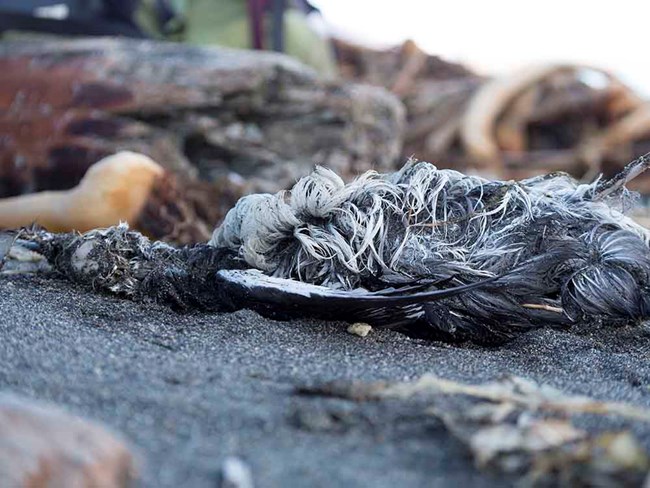Last updated: October 26, 2022
Article
Marine Heatwave linked to Seabird Die-off

Ocean ecosystems are changing, driven largely by ocean heatwaves and, specifically, the massive heatwave of 2014-2016 known as The Blob. This paper focuses on the Common Murre die-off in 2016-2016 and discusses the many related ecosystem components also impacted.
In the winter of 2015-2016, researchers and volunteers counted 62,000 bird carcasses washed up on beaches from California to Alaska. Because not all dead birds wash up on the shore, we estimate the total to be as many as a million dead birds. They all starved; no evidence of other causes of mortality was found.
Other ecosystem changes were found in conjunction with the marine heatwave that made sense in connection to the murre starvation. The base of the food chain, plankton, were impacted and had an impact on many other marine species. These changes, while especially pronounced in 2014-2016, continue with warming ocean waters today.
Extreme mortality and reproductive failure of common murres resulting from the northeast Pacific marine heatwave of 2014-2016
Abstract
About 62,000 dead or dying common murres (Uria aalge), the trophically dominant fish-eating seabird of the North Pacific, washed ashore between summer 2015 and spring 2016 on beaches from California to Alaska. Most birds were severely emaciated and, so far, no evidence for anything other than starvation was found to explain this mass mortality. Three-quarters of murres were found in the Gulf of Alaska and the remainder along the West Coast. Studies show that only a fraction of birds that die at sea typically wash ashore, and we estimate that total mortality approached 1 million birds. About two-thirds of murres killed were adults, a substantial blow to breeding populations. Additionally, 22 complete reproductive failures were observed at multiple colonies region-wide during (2015) and after (2016–2017) the mass mortality event. Die-offs and breeding failures occur sporadically in murres, but the magnitude, duration and spatial extent of this die-off, associated with multi-colony and multi-year reproductive failures, is unprecedented and astonishing. These events co-occurred with the most powerful marine heatwave on record that persisted through 2014–2016 and created an enormous volume of ocean water (the “Blob”) from California to Alaska with temperatures that exceeded average by 2–3 standard deviations. Other studies indicate that this prolonged heatwave reduced phytoplankton biomass and restructured zooplankton communities in favor of lower-calorie species, while it simultaneously increased metabolically driven food demands of ectothermic forage fish. In response, forage fish quality and quantity diminished. Similarly, large ectothermic groundfish were thought to have increased their demand for forage fish, resulting in greater top-predator demands for diminished forage fish resources. We hypothesize that these bottom-up and top-down forces created an “ectothermic vise” on forage species leading to their system-wide scarcity and resulting in mass mortality of murres and many other fish, bird and mammal species in the region during 2014–2017.
Piatt, J. F., J. K. Parrish, H. M. Renner, S. K. Schoen, ... H. A. Coletti, et al. 2020. Extreme mortality and reproductive failure of common murres resulting from the northeast Pacific marine heatwave of 2014-2016. PLoS ONE 15(1): e0226087.
